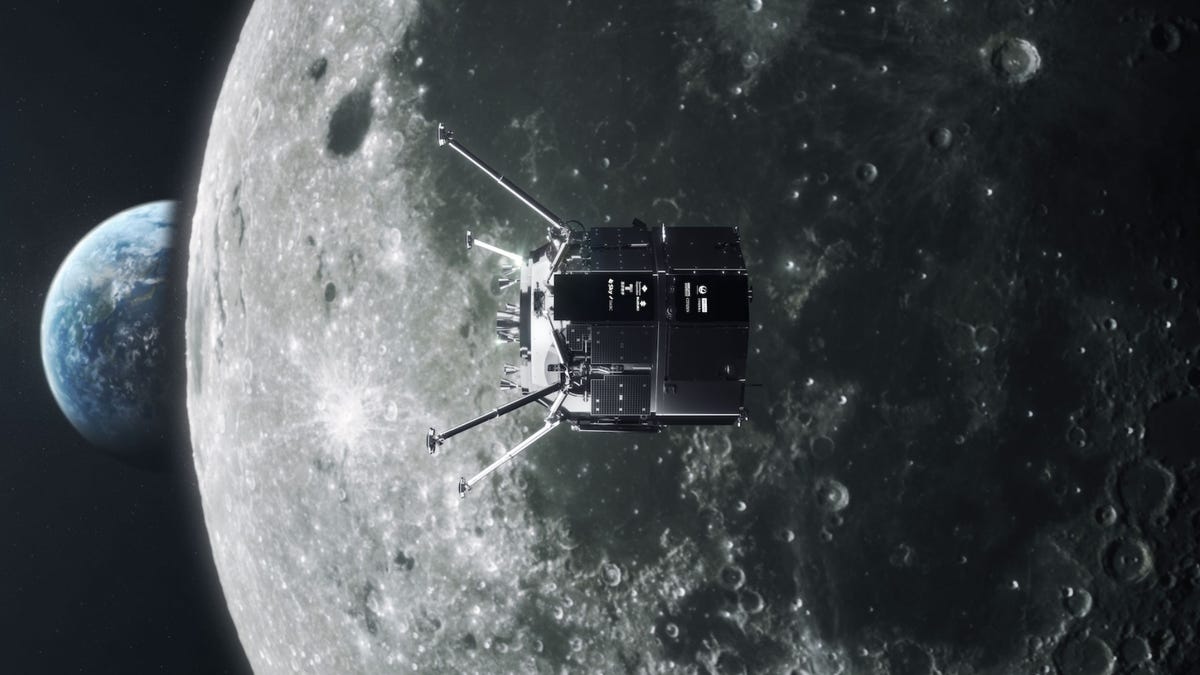SpaceX Falcon 9 Rocket Sends Lunar Lander, Rover on Their Way to the Moon
Japanese company iSpace is sending its M1 lander to the surface of the moon carrying Rashid, a new rover from the United Arab Emirates.

An illustration of the Hakuto R M-1 lander in flight.
While the Orion spacecraft, a key part of NASA's Artemis I mission, is on its way back to Earth after going far beyond the moon, a new lunar lander from Japan and a small rover from the United Arab Emirates are now en route for a visit to our planet's lone natural satellite.
The Hakuto R mission, led by private Japanese company iSpace, launched from Florida early Sunday atop a SpaceX Falcon 9 rocket to send its M1 lander to the surface of the moon. The lander is 8.5 feet by 7.5 feet (2.6 meters by 2.3 meters) when fully unfolded.
Liftoff took place at 12:38 a.m. ET (11:38 p.m. Saturday PT). The first stage booster from the Falcon 9 returned for a landing at Cape Canaveral Space Force Station about 9 minutes later and a little less than an hour after launch, SpaceX announced that Hakuto R M1 had been deployed and was officially on its way to the moon.
Deployment of ispace’s HAKUTO-R Mission 1 confirmed pic.twitter.com/9R3Uw2qceS
— SpaceX (@SpaceX) December 11, 2022
"Our first mission will lay the groundwork for unleashing the moon's potential and transforming it into a robust and vibrant economic system," Takeshi Hakamada, founder and CEO of iSpace, said in a statement.
Hakamada added that the company is hoping to contribute to the Artemis program. The US space agency has already committed to buying moon rocks that M1 will collect.
The company confirmed on Sunday it had established a stable communications link with the lander.
The launch had been set for last week, but the company postponed it, first to Wednesday morning and then again to Sunday, so that SpaceX could perform additional preflight checks of the launch vehicle.
iSpace was one of the finalists in the Google Lunar X Prize competition, which ended back in 2018 without any winners being declared. But it did raise funds to continue on its own and secure some customers with similar lunar ambitions. That's how a rover named Rashid from the UAE's space program wound up on board M1.
Rashid is set to study moon dust and will send images and data back to Earth.
If the mission succeeds, Japan and the UAE will join the US, Russia and China as the only countries that have managed to put a robot on the lunar surface. Another Lunar X Prize finalist, Israel's SpaceIL, attempted its own lunar landing in 2019, but the mission ended with a crash into the moon that destroyed the spacecraft.
The lander has a long journey between blastoff and lunar touchdown, performing months' worth of tests in space before arrival at the Atlas crater on the near side of the moon, which is scheduled for April.

